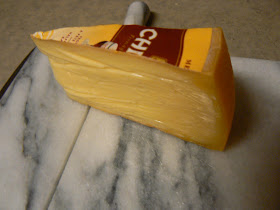Another notable cheese from the Badger State, love the nickname, Saxony is a cheddar-esq table cheese that proves American cheeses can still have some of the mojo of the Old World. This is a cheese that tastes decidedly of Europe, thanks in part to it's being made of raw milk and in part to the history of the dairy, Saxon Homestead Creamery.
5 generations ago, in 1848, a family moved from the Saxony region of Germany to America in search of new opportunities. It was an exciting time in still-young America; Wisconsin had just become a state, we were at war with Mexico, and soon there'd be both a president named Zachary and a gold rush in California. This particular family, however, understood that the true gold lay not in the ground, but in the grass. Not in the dirt but in the delectables. Not in that which shines but in that which satisfies!
The first cheeses started being made, if perhaps not commercially sold, in 1870, and now look at them. Officially entering the cheese scene in 2007, their raw milk selection soon won them considerable acclaim. Also, they have a website. We should all start dairies. I want a website.
Origin: Wisconsin, USA
Milk: Cow, unpasteurized
Rennet: Microbial
Affinage: 90-150 days
Notes: The rind is embossed with the name of the cheese and the logo of Saxony Homestead Creamery, which is all great sure but if Gordon Ramsey was cooking me a steak I wouldn't want his face branded on top. Yeah?
Thoughts: Like a tart cheddar, drawing heavily on the influence of Saxon and French style aged raw cow milk cheeses, Saxony starts quiet but has a rich and nuanced flavor from the very beginning. The raw milk really features here in all its flavor-giving goodness, relatively unbothered by either an overpowering creaminess or competing tones. A grassy undertone does, however, permeate the flavor and the mild bitterness builds up strongly for a rich finish. Not what I'd call a powerful or sharp cheese, but it manages to be sophisticated and delicious in all its mildness. Impressive.

























